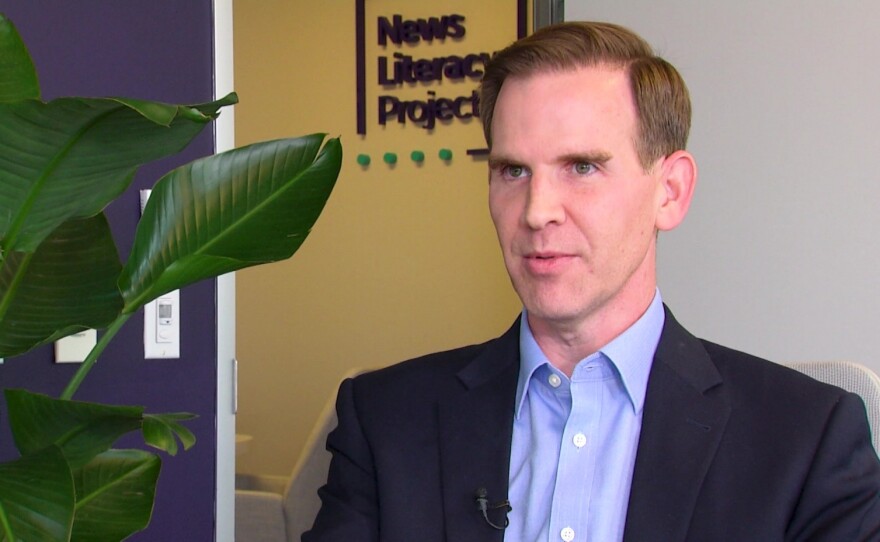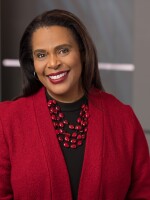In March 2016, a sports comedy website posted a story about boxer Floyd Mayweather. It claimed he had attended a Donald Trump rally while wearing a hijab and daring people to fight him. The joke went viral on social media, but as people shared it, some people believed the incident had happened.
Also in March 2016, Wikileaks hacked and leaked email exchanges between presidential candidate Hillary Clinton and campaign staffer John Podesta. Almost immediately, conspiracy theories arose, claiming that Clinton was involved in human trafficking and that children were being kept in bondage at a Washington, D.C., pizza restaurant.
Believing the viral misinformation, 28-year-old Edgar Maddison Welch drove from his home in North Carolina to a popular pizza place in Northwest Washington, D.C., where he believed children were in danger. Welch fired shots from an AR-15 and demanded that employees release the children he believed were there. Since that time, Welch has completed a four-year prison term, and employees of the restaurant have spoken publicly about the trauma they experienced that day.
The incident, which has become known as Pizzagate, is one illustration of how dangerous misinformation can be when it is shared across social networks. In fact, research suggests that false news and information travels on social media much faster than actual news.
Sometimes, false information is shared by accident. Sharing information that is believed to be true is misinformation. Disinformation, by contrast, is deliberately manufactured to deceive.
Sander van der Linden is a social psychologist at the University of Cambridge. He specializes in social influence, persuasion and misinformation. Van der Linden and his team have devised an experiment to test the effectiveness of inoculating people against false information. This “disinformation vaccine” involves inviting people to watch a series of entertaining videos, created in partnership with Google’s Jigsaw, designed to teach people about manipulative tactics used to influence people’s beliefs and behaviors.
In an informational video about the project, van der Linden said the results have been positive. He said an individual’s familiarity with something — called brain fluency — influences the degree to which they believe it’s true. The more information is repeated, the more familiar it becomes and the more likely an individual is to encode it with related, familiar information. In this way, even information that has been debunked as false can still affect an individual’s thoughts and actions. The Cambridge work aims to prevent disinformation and misinformation from taking root in the brain, acting as a preventive measure rather than fixing the damage of misinformation after it’s done.
Heavily emphasizing emotional appeals, insisting on blaming scapegoats for problems and setting up false dichotomies, such as “you’re with me or against me,” are some of the ways content creators influence people’s feelings, thoughts and actions. Not all false content is intended to do harm, but it can certainly have a significant impact, van der Linden says. Disinformation can propagate within seconds, and the resulting misinformation can go viral just as quickly.
Charles Salter is President and CEO of the News Literacy Project, a nonpartisan nonprofit based in Washington, D.C. Salter is a former schoolteacher, principal and division superintendent. He is also credentialed in law and executive management. Since July, Salter has led the organization, which was founded in 2008 by Alan C. Miller, a Pulitzer Prize-winning journalist.
“With the 2016 presidential election, regardless of who anyone was for or against, it became pretty obvious to the public that we had a serious problem with disinformation,” Salter said.
“It's made even more fraught by the internet, allowing people to create and disseminate disinformation easier and faster than ever before,” he said. “Disinformation has always existed, you know, there's always been people trying to mislead for one reason or another. But now it's become so easy and so fast to do, and so difficult to discern.”
Former President Trump’s heavy use of the term “fake news,” along with his steady attacks on the validity of mainstream media, has weakened many Americans‘ trust in traditional journalism. Additionally, Trump’s insistence that the 2020 election was stolen has prompted some people, especially those who support Trump, to question American institutions and processes.
In June, the U.S. House Subcommittee on Elections held a hearing entitled “ A Growing Threat: How Disinformation Damages American Democracy.” The panel called on experts as they considered the adverse impact of disinformation on the country’s electoral processes, voting rights laws, access to the ballot for diverse Americans and the safety of election workers.
“Falsehoods spread about processes such as mail-in voting and drop boxes and how votes are processed and counted — and even more — have led to threats to elections officials, the January 6 attack on the peaceful transition of power, and have galvanized a wave of restrictive voting laws enacted all across the country in the wake of the 2020 election,” said Rep. G. K. Butterfield (D-N.C.) during the proceedings.
Regarding the term “fake news,” Salter said that while it started out meaning disinformation, it no longer conveys the same meaning. “When someone uses that term, “fake news,” really, what that means is news they don't like or news they don't agree with, regardless of its veracity or accuracy. And so, we really steer clear of that because, unfortunately, it's become a weaponized, almost politicized word.”
Like researchers at Cambridge, Salter and his NLP colleagues are focused on prevention. Their informational programs and free teaching resources — for both children and adults — seek to inform the public, teach people to recognize misinformation more easily and help them refrain from spreading it to others.
“We accomplish our mission several ways. The first is in our public schools. Our focus in the education space is to train teachers and provide them with cutting-edge curriculum for them to actually use in their classroom,” Salter said.
One of those classrooms is managed by Patricia Hunt, a U.S. and Virginia government teacher at Wakefield High School in Arlington. Hunt utilizes news coverage to teach about government and democracy.
“They need to be able to recognize news for what it is and the standards of journalism, and I believe it is a skill that will carry them beyond the classroom and into adulthood as they become voters and engaged and participate in our democracy,” Hunt said. “Students have at their fingertips more information than ever before in human history. And the ecosystem in which they dwell is polluted."
Hunt’s students work in small groups, reading quotes and reviewing news stories before discussing the material and answering questions online. Students assessed the NLP Checkology lessons they’ve been utilizing as both helpful and enjoyable. The Checkology e-learning platform is a free, learning tool provided by NLP
“It actually activates your mind as opposed to just looking at a textbook or a test. I like talking to my peers and getting their opinions, too,” said Jackson Voyda, one of Hunt’s students.
Lydia Dawit described herself as less gullible than some: “I don’t believe things as easily when I see them. I’ll fact-check, and I’ll make sure it’s real.” She spoke about learning not only to separate fact from fiction but also to determine what type of information she is consuming. “We’re learning about different Infozones — propaganda, entertainment and raw information — from the articles and videos we’re watching,” the student said.
Hunt’s class seemed unanimous in recognizing that disinformation is a major problem in a world so driven by technology and rapid communication. They spoke about the danger of being harmed by information that you might incorrectly believe is meant to help. And they spoke about how to gather facts to support arguments in a debate.
Jonathan Hernandez said the curriculum is valuable for getting young people like him to engage more fully and knowledgably in public life.
“How often do kids our age really look at news and stuff like that and really talk about it and process it?” Hernadez said. “And it was good because I didn’t know there were so many types of Infozones. I didn’t really know how to separate them when we first started, but now we’re here going through these lessons, and I’m getting all of them right.”
Hunt said she considers these lessons as valuable as any she offers her students. “I think the pandemic proved that it is really essential that people know how to tell fact from fiction. The number of people who fell for all sorts of dangerous remedies for COVID is just extraordinary. And then I would say our democracy is at stake when it comes to misinformation. There are just too many people who are relying on false information to make vital decisions about our democracy,” she said.
NLP would like to see every school system in the country adopt these kinds of lessons.
This fall, Illinois implemented a law requiring all high schools to teach media literacy across multiple subjects. According to the nonprofit advocacy group Media Literacy Now, the state is the fifteenth in the country to mandate media literacy instruction — up from only one in 2011.”
“Those responsible for the founding of the country understood that a free press is necessary for a free people, and they put it in the Constitution,” Salter said.
“I think the sooner that school systems account for that and make room for it — and I understand that that's difficult with all the other obligations they have — I think the better off we'll be,” he said. “And so yes, I think the idea of news literacy, embedded in our public education system so that all people are taught it — just like they're taught how to read and just how they're taught how to write and to do arithmetic — has been important and has been recognized as being important since our very founding.”
Correction: This article previously misidentified the school Patricia Hunt teaches at. We have updated the article and apologize for the error.




